Dear creative friends,
Welcome to Issue No. 56 of the Studioworks Journal! I am delighted that you have joined me and I can't wait to begin this exploration with you. This month, our focus is on the art of collage, a medium that beckons us to delve into the boundless realm of creativity and self-expression. Just like pieces of a puzzle coming together to form a breathtaking whole, collage allows us to arrange fragments of different realities into a cohesive and enchanting tapestry.
Within collage, we have the unique opportunity to discover the language of color, emotion, and mark-making in a way that resonates deeply with our souls. Each cutout, every texture, and the merging of diverse elements become a reflection of our inner selves—a visual symphony of the many facets that make us who we are.
Let's embrace the wonder and versatility of collage together, discovering how it can enrich our artistic practices and open new doors to self-discovery. Let’s begin…
xo,

So you may be wondering, where do I start? To that, I say, wherever feels right to you. Each month we will have a theme, a creative affirmation, a power word, a color palette, sketchbook exercises, art projects, articles, recommended reading, and access to wonderful inspiration and resources. I want you to think of this as a delicious new magazine, you know the ones you occasionally splurge on, with soft, velvety pages, beautiful images, and inspiring content!
Each issue will invite you to explore your creative practice in whichever way works for you. Experience each issue at your own pace. Take what resonates with you and put the rest aside for another time.
Grab a cup of something lovely and dive in.
When Aristotle said, “The whole is greater than the sum of its parts,” he spoke to the power of synergy, where combining resources generates something beyond expectations. He also incidentally created the perfect slogan for the art form collage that emerged in force a couple of millennia later.
The term collage comes from the French word coller, which means “to glue” or “stick together.” Creating pieces in this style includes combining various items, such as paint, newspaper clippings, pieces of cloth, ribbons, and found objects, and applying them to a surface, like paper or canvas.
The goal, of course, is to create something with a message that provokes ideas in profound and visually compelling ways that would be impossible using only a single medium. Increasing the scope of what is achievable, there are several subgenres of collage, including assemblage, découpage, photomontage, fabric collage, and now eCollage or digital collage. Essentially, there is a style for everyone, and no material is off-limits. Let’s look back in time to explore what gave rise to this diverse movement that freely draws from any source that inspires an artist making it an innovator amongst mediums.
The earliest use of collage techniques dates back to the invention of paper in China in 200 BC. However, it wasn’t until 10th century Japan when poets began pasting paper and calligraphy onto surfaces in the creation of their poems, that a collage style began to take hold. Later, during Europe’s Gothic era, collage techniques were used in cathedrals to adorn the walls, statues, coats of arms, and icons with gems, gold leaf, and other precious metals.
Despite these early examples, it wasn’t until the early twentieth century that collage emerged as a creative tour de force in the art world. The term papier collé was coined by Cubist painters Pablo Picasso and George Braque. The charcoal piece Fruit Dish and Glass by Braque is considered the first example of collage art. Soon thereafter, Picasso began using newsprint in his oil paintings and adhering rope around the perimeter of some canvases. A fine example of this is Still-Life with Chair Caning.
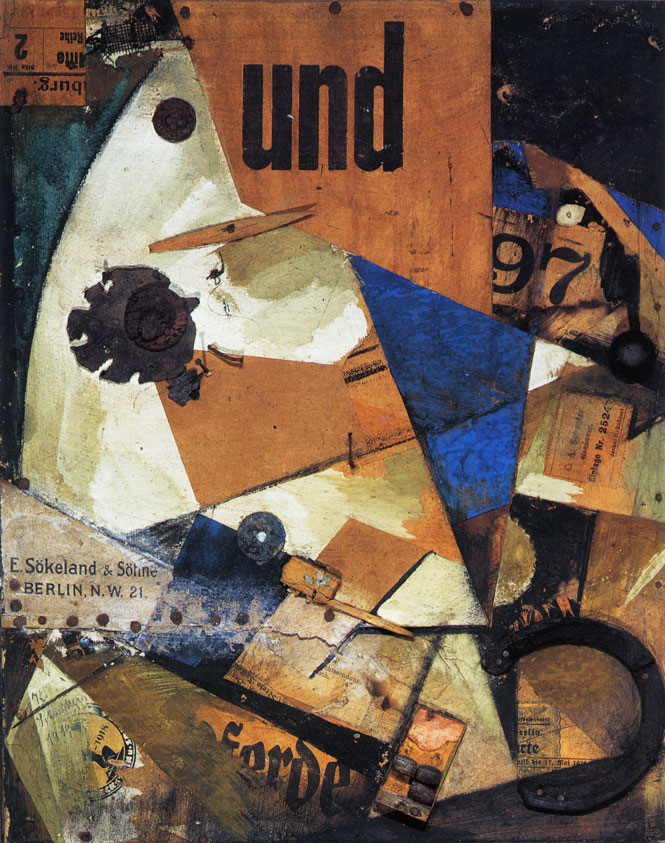
Kurt Schwitters, Das Undbild, 1919, Staatsgalerie Stuttgart
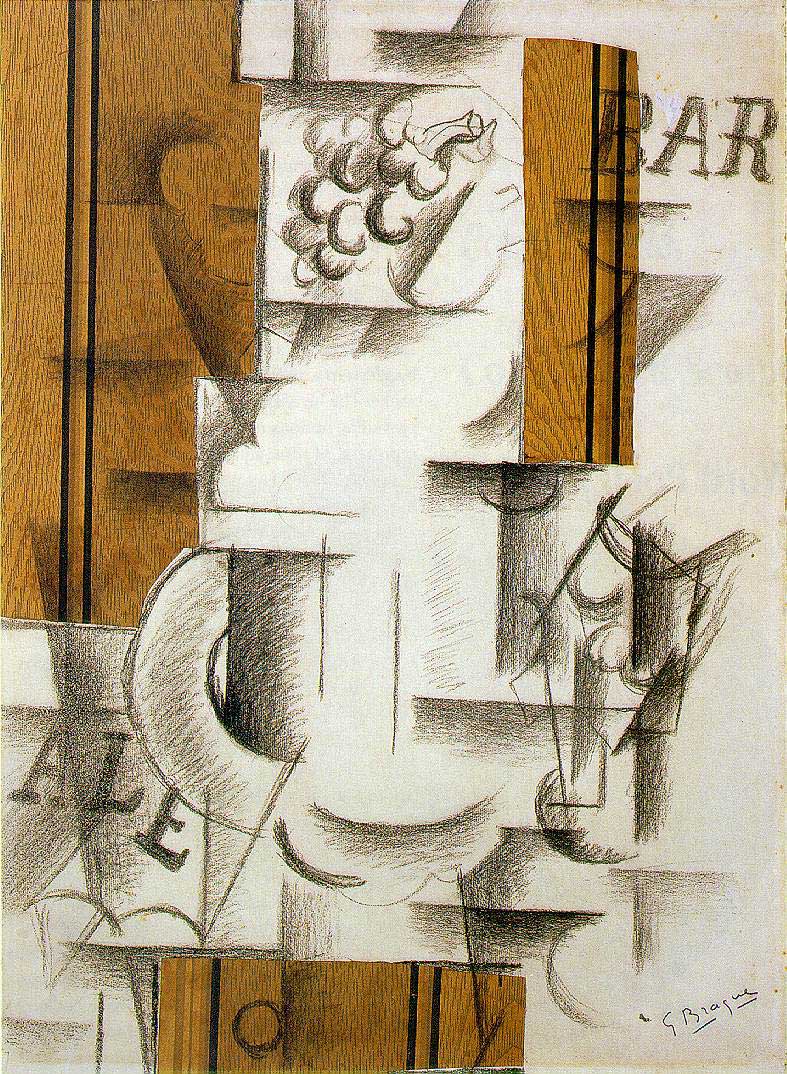
Kurt Schwitters, Das Undbild, 1919, Staatsgalerie Stuttgart
An aspect of this emergent style that helped propel it to popularity was how it blurred the lines between picture and sculpture while simultaneously provoking questions about what constitutes art. By using common items not strictly made by the artists, conventions demanding the separation of fine art from the ordinary were exuberantly tossed out.
In addition, collage was a visually captivating way to comment on social issues, making it a rich source of inspiration for artists in the wake of World War I. These characteristics of collage made it a favorite medium of Modernists, Dadaists, and Surrealists who were fed up with the old order and wanted to shake things up. It also ensured its place in Pop and Contemporary Art.
Many artists followed suit once Braque and Picasso broke the seal on using collage in their work. Directly inspired by them, Hans Arp created some of the Dada movement’s earliest exhibits in Zurich, infusing his work with abstraction, randomness, and chance. Another influential Dadaist, Hannah Höch, made her mark by pioneering the technique of photomontages, often deriving images from popular media and using them to create commentaries on issues of feminism, gender, and sexuality. Her piece “Cut with a Kitchen Knife” is a poignant example of this.
Building on the style of Dada artists, Surrealist collagists took the method a step further, creating strange, dream-like, and fantasy-tinged images that seemed to arise straight from the unconscious. Excelling in this style were artists Joseph Cornell and André Breton. Another Surrealist innovator Max Ernst created some of the first notable works that incorporated a blend of visual and verbal elements, which became a popular trend in the movement.
Also deserving of an honorable mention is Henri Matisse. He made collage art his focus long after the initial wave of popularity had subsided. His piece “Blue Nude II” illustrates how evocative collage can be and underscores how Matisse continued to evolve throughout his career.
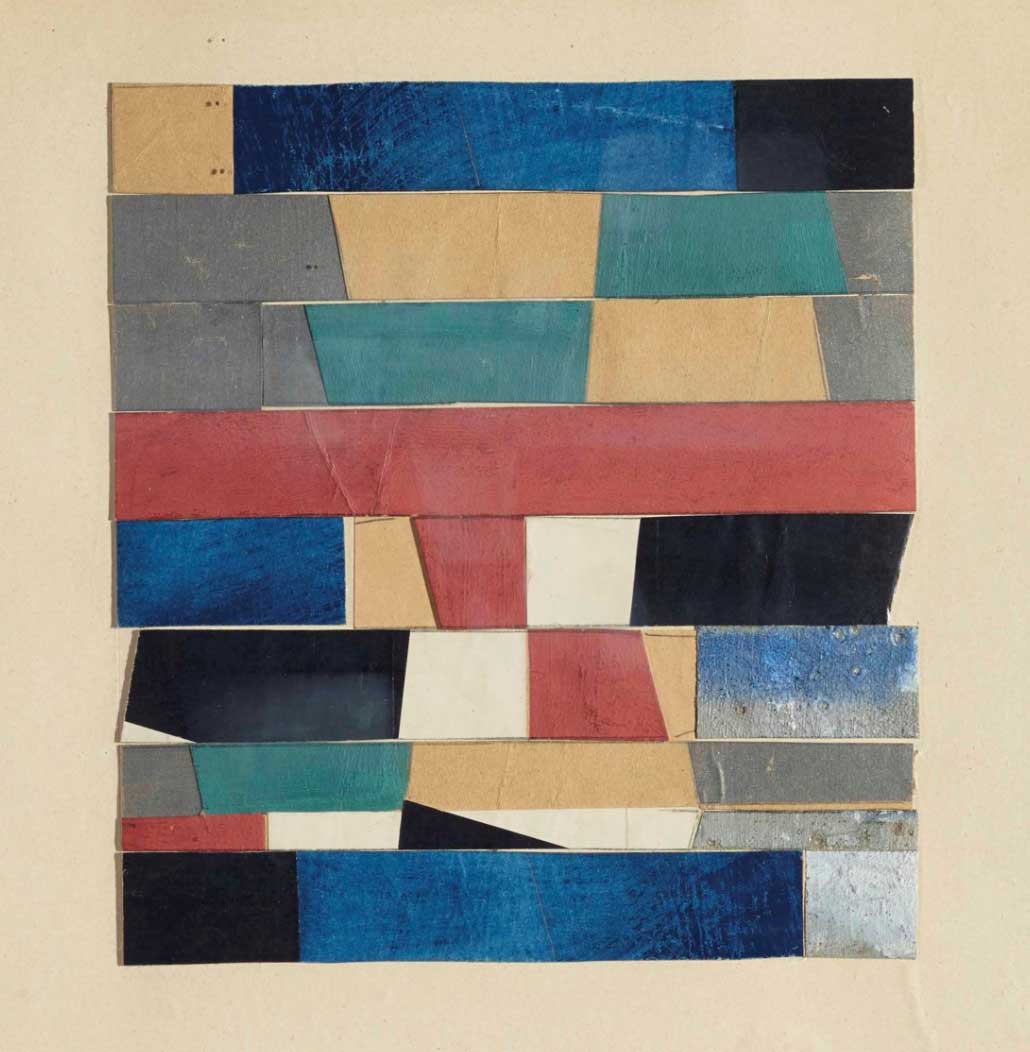
Hans Arp, Ohne Titel, 1920
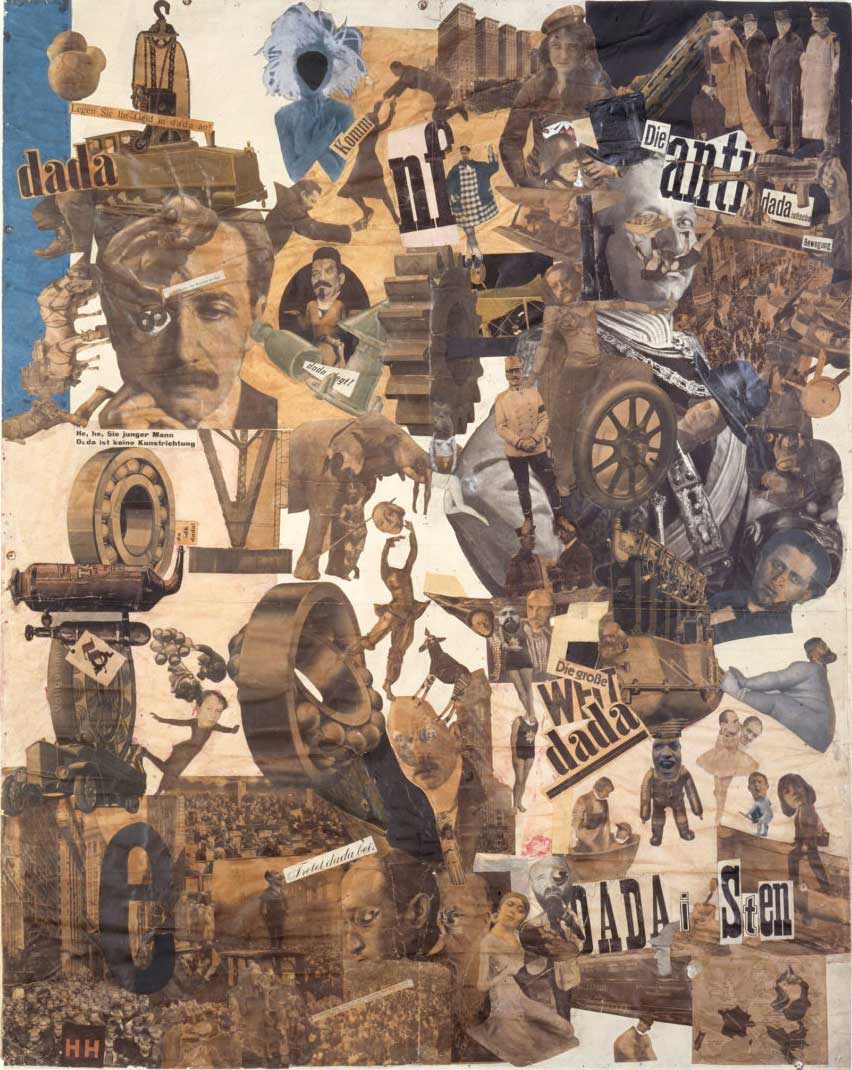
Hannah Höch, Cut with the Kitchen Knife Dada Through the Last Weimar Beer-Belly Cultural Epoch of Germany, 1919–1920
Mixing media is a distinctive way to add dimension, texture, and commentary to creative works allowing the artist to explore more freely. This capacity underpins the allure of collage, explaining why it has been around for so long and continues to retain appeal.
Collage also neatly filled the needs of early twentieth-century artists who were ready to flout convention. Its unique ability to draw upon timely events and provoke change in the art world made it a perfect avenue for social commentary and an enduring contributor to creative innovation. By freeing the artist to include whatever elements they desire, collage beautifully illustrates how with skillful combination, the whole can be so much greater than the sum of its parts.
The art of collage, in its contemporary form, has its origins in change. Everything was in flux when it emerged at the dawn of a new century with the world on the brink of war. In this context, understandably, collage’s pioneers were determined to slough off the limitations, errors, and rigidity of the past and redefine art. They did this by combining everyday items with traditionally acceptable media creating a blend that was something altogether new.
Now it might be tempting to interpret this process as disruptive, but the longer view reveals something else. By exposing the error of holding to limited ideas of what is definable as art, the door was flung open to new forms of creativity. This transformation generated a fresh equilibrium wherein disparate languages could join together to create the harmonic voice of collage.
There are many lessons available if we look to collage for inspiration. We can take a cue from early collagists and loosen our view of what we’re allowed to use in our work. By accepting the freedom to create by any means at our disposal, we broaden the scope of what is possible.
For example, we can incorporate photos, old ticket stubs, wallpaper, cloth, or random items we find in our travels. We can paint pieces of paper and cut them into orderly or random shapes for later use. We can be open to using wood, stone, or other unorthodox surfaces as the backdrop of our piece.
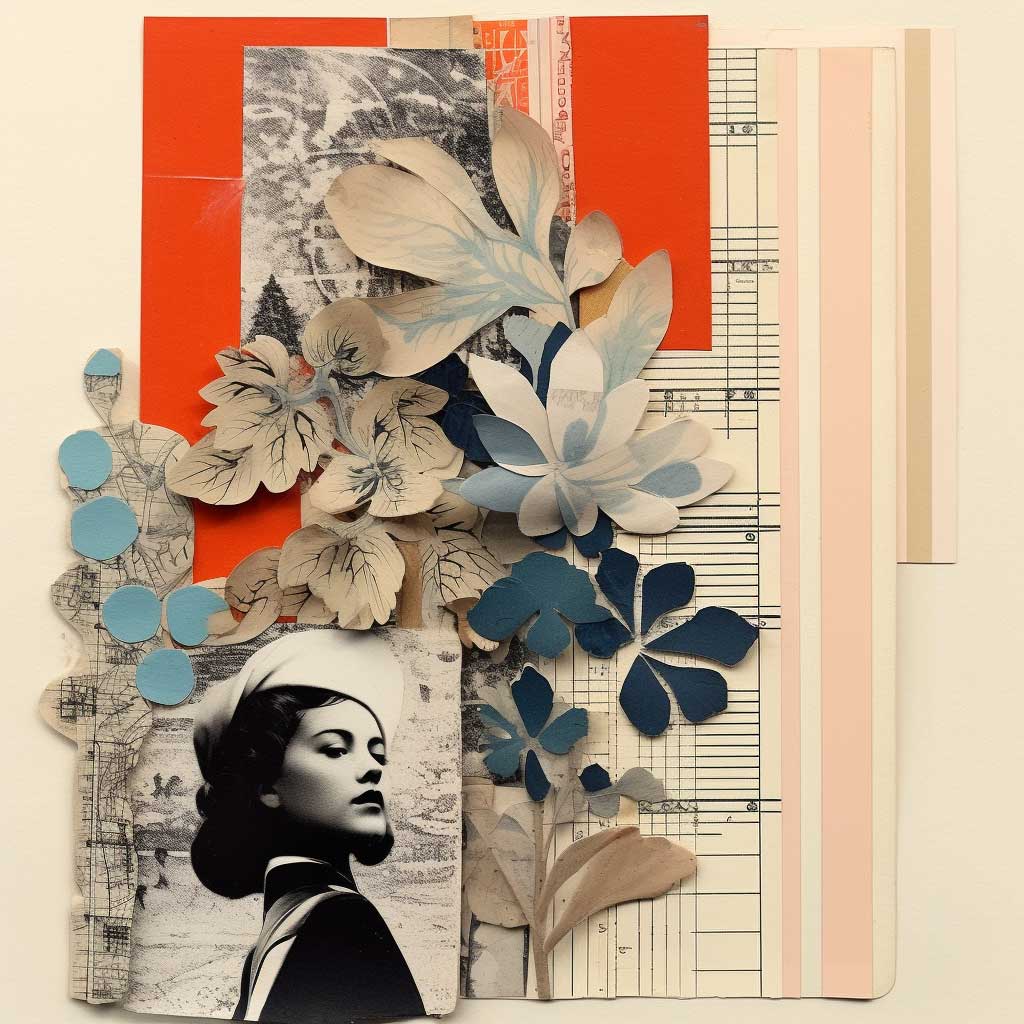
Another valuable tool collage offers is the ability to speak directly, incorporating pieces of text or imagery from popular media to make a commentary on modern life. Being deliberate here is key. Consider what you want to say and how you’d like to get your point across. What is your intended tone? Humorous? Scathing? Heartfelt? These choices, when made consciously, will effectively guide your creative process.
After compiling materials and deciding on your message, you may feel like you don’t know how to begin. If so, consider different elements such as line, color, shape, texture, and form. If you’re overwhelmed, narrow down what you include retaining only those components that feel right. Alternately, separate the materials by element and let the organizing process reveal your next move. Play around before gluing anything down, leaving yourself free until you are satisfied with the outcome.
The goal here is to honor the tradition of collage, both its social commentary and freedom, while keeping harmony in mind. In other words, no matter how many components you include, consider their interaction and whether you find the results pleasing. If not, continue to play until what feels discordant relaxes into place or gets tossed out.
Historically, collage has been used as a disruptor, a way to defy the status quo and renounce those who promote conformity. It’s a visual language for social commentary that simultaneously permits us to see art in everything surrounding us, infusing the mundane with the glow of possibility.
In addition, it’s fun, playfully teaching us how to bring elements that seem wildly different into a seamless union. Perhaps this is the essence that collage most beautifully imparts, that things that seem not to agree can still find a way to work together in harmony. Heeding this lesson should improve not only our art but our world.
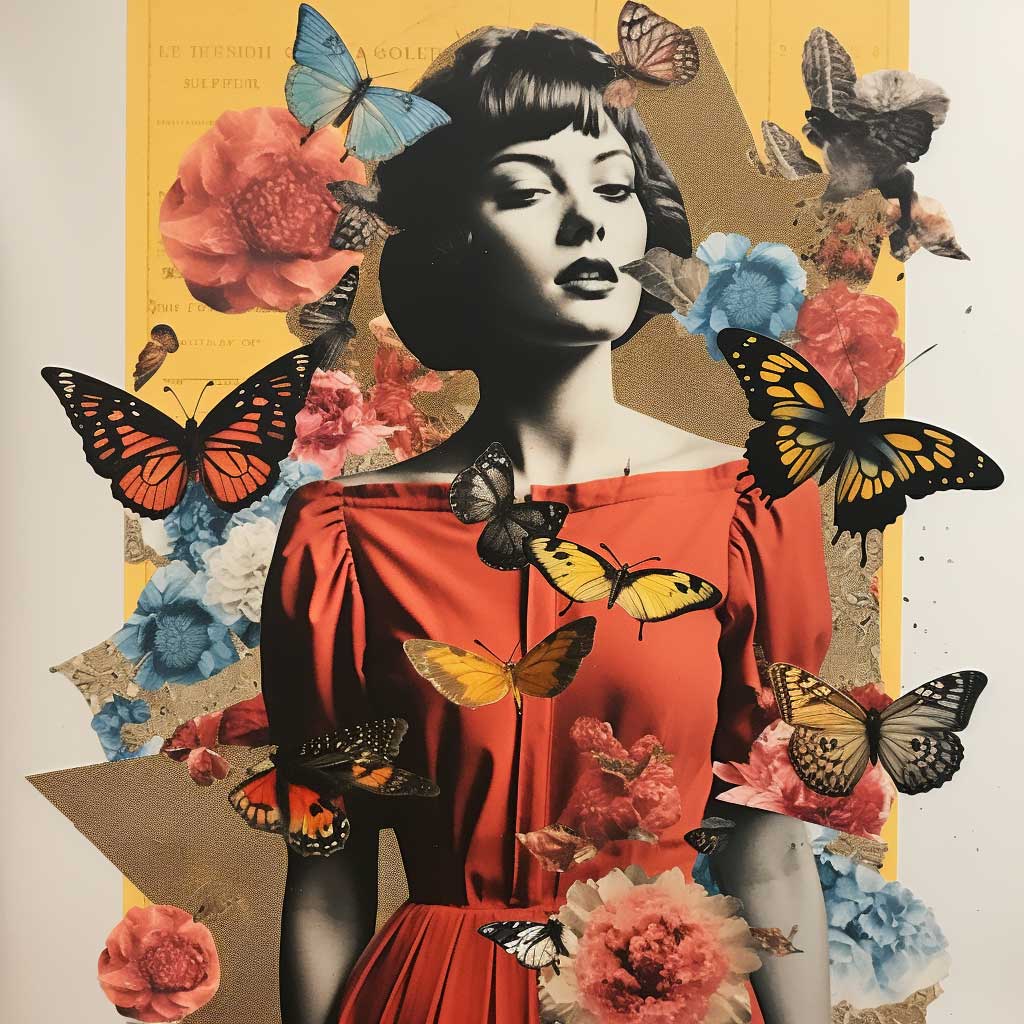
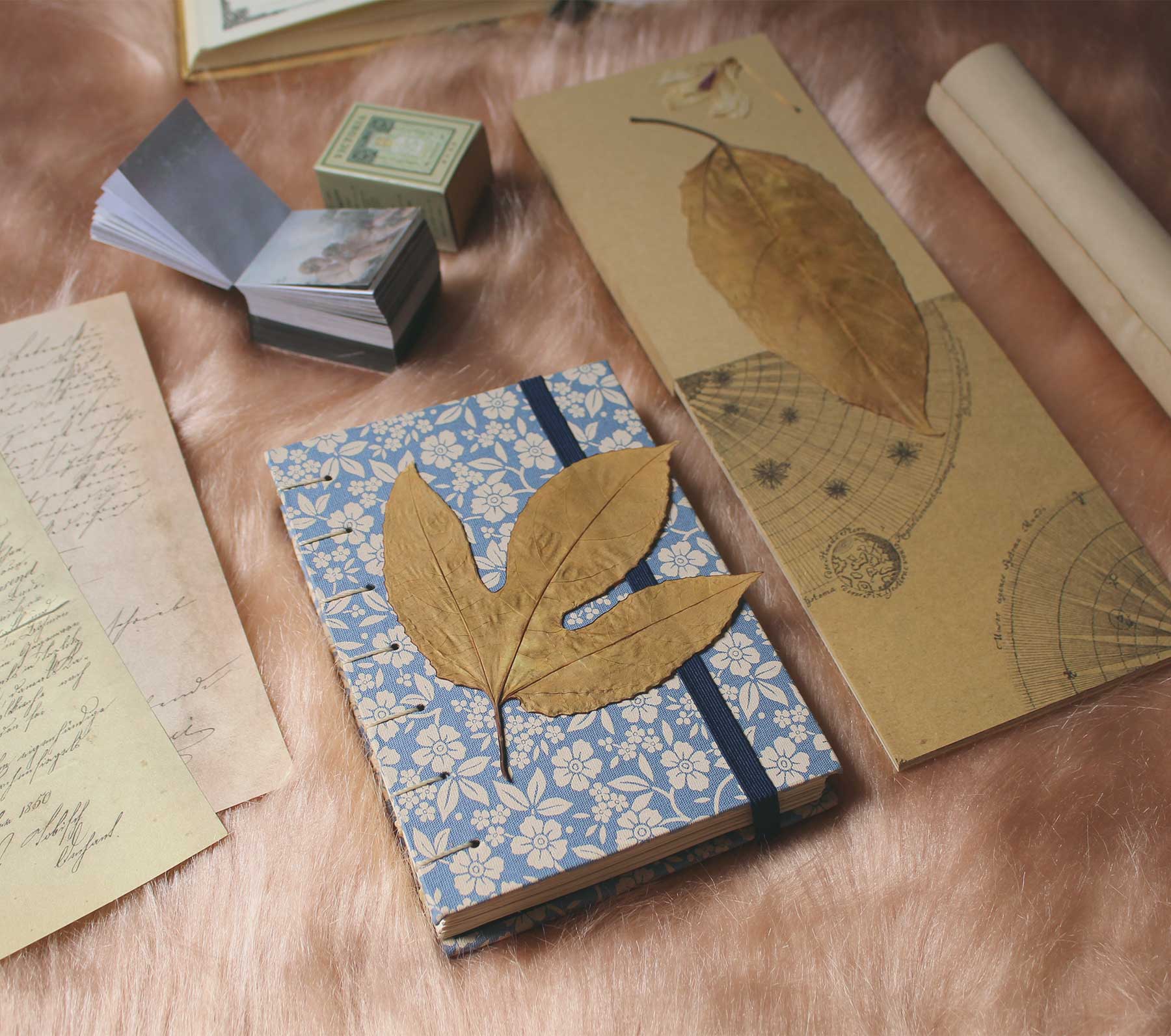
Materials and Found Objects: When creating collages, we often use a wide range of materials and found objects, such as old magazines, newspaper clippings, fabric, photographs, and various scraps. The act of collecting these materials can lead to surprising discoveries, as we stumble upon unique textures, colors, or patterns that they hadn't anticipated using. These unexpected elements may inspire new directions in our artistic expression.
Visual Composition: As artists, we arrange and rearrange the various elements in a collage, we discover unexpected connections and harmonies between different shapes, colors, and textures.
Conceptual Exploration: Collage as a medium often allows for playful experimentation and a free-flowing approach to artistic creation. During this process, we may stumble upon new conceptual ideas or themes that were previously unexplored. The act of combining disparate elements can spark unexpected narratives, emotions, or symbolism, leading us to make discoveries about the deeper meaning of our work.
Personal Expression: Collage can be a deeply intuitive and introspective form of artistic expression. As we work with different materials and engage in the process of layering and reworking their pieces, we uncover aspects of our own emotions, memories, or subconscious that we hadn't consciously acknowledged before. Collage becomes a vehicle for self-discovery and a means of delving into the our inner world.
Ultimately, the act of creating collages is an adventure of discovery for us. It involves exploring the unknown, embracing serendipity, and welcoming the unexpected.
Get those journals and sketchbooks out and get ready to do some self-reflection and writing. Try not to judge what comes out of these writing sessions. Don’t worry about punctuation or grammar or any of that. You can even just make lists if that suits you better. Remember, journaling is a deeply personal practice, so feel free to adapt these prompts to better suit your own thoughts and experiences.
Take a moment to get quiet. Still yourself by doing some gentle breath work. Light a candle. Now ask yourself some questions to reflect upon -
Remember, journaling is an opportunity for self-exploration and introspection, so feel free to express yourself openly and authentically. Use these prompts as starting points to delve into your creative process and the unique journey of collage-making. Happy journaling!
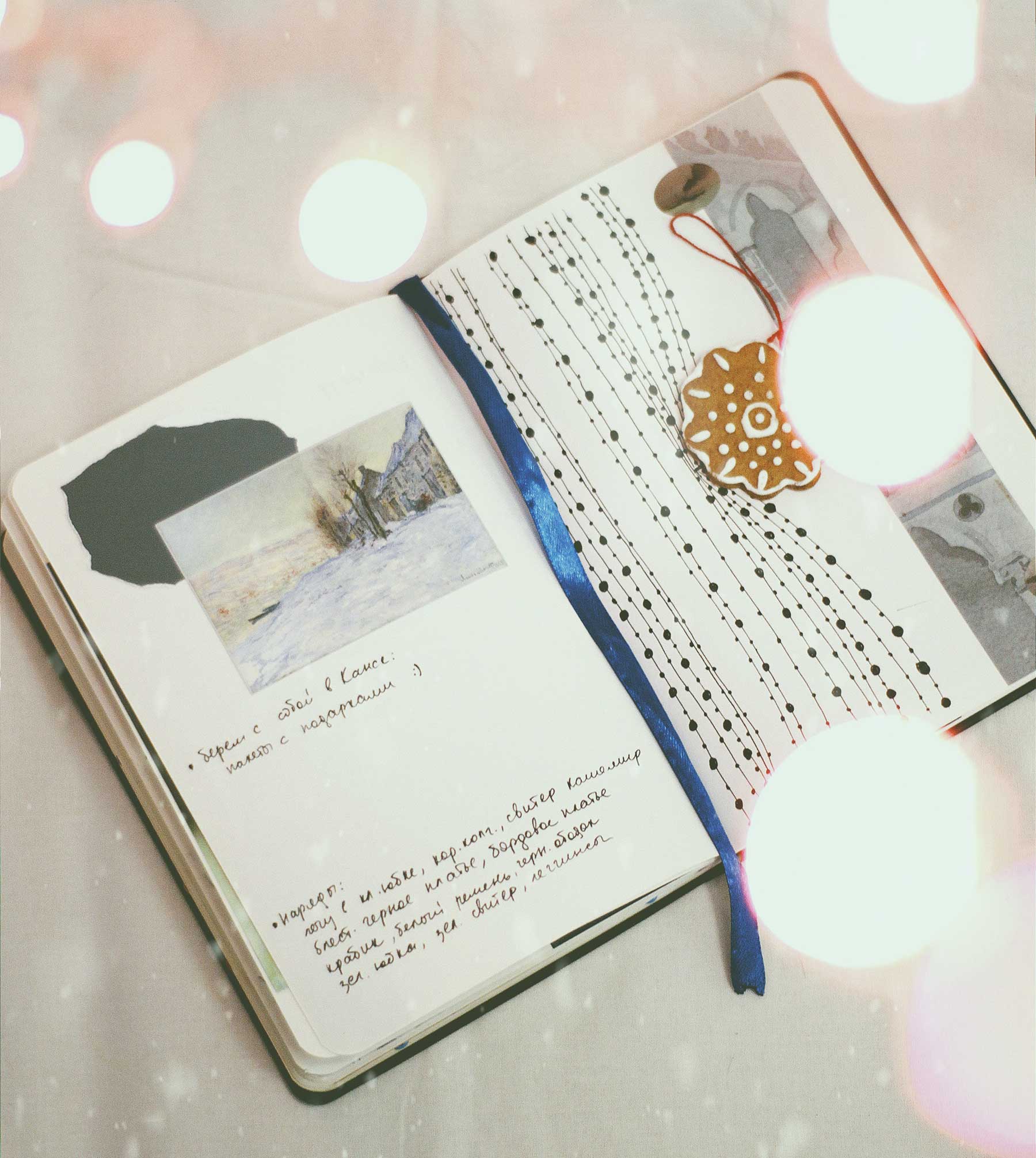
I am sharing this beautiful energy experience session from one of my favorite meditation masters - Rachel Hillary. This journey will help you to feel more grounded and connect with your inner peace. Give yourself some quiet time to enjoy this beautiful meditation.
Rachel will share a little about this experience -
This meditation activation is designed to create a shift and elevation through the light of your solar plexus area. We behold our own light, our power, our energy, and focus on enhancing it by gently allowing it to shine more and more. This includes guided imagery, tones, and also calling on your own inner voice and intuition more and more, allowing a steady self-trust to develop within over time. Calling your power back to reside within. 'Let Go' music by Chris Collins.
lots of love,
Rachel
Each month we will have a positive affirmation. I recommend you print out this affirmation and put it in your sketchbook or somewhere in your studio. Recite the affirmation out loud each time you show up to create. Saying words aloud is powerful and can begin to re-write some of our own limiting beliefs or calm our fears. Try it now…
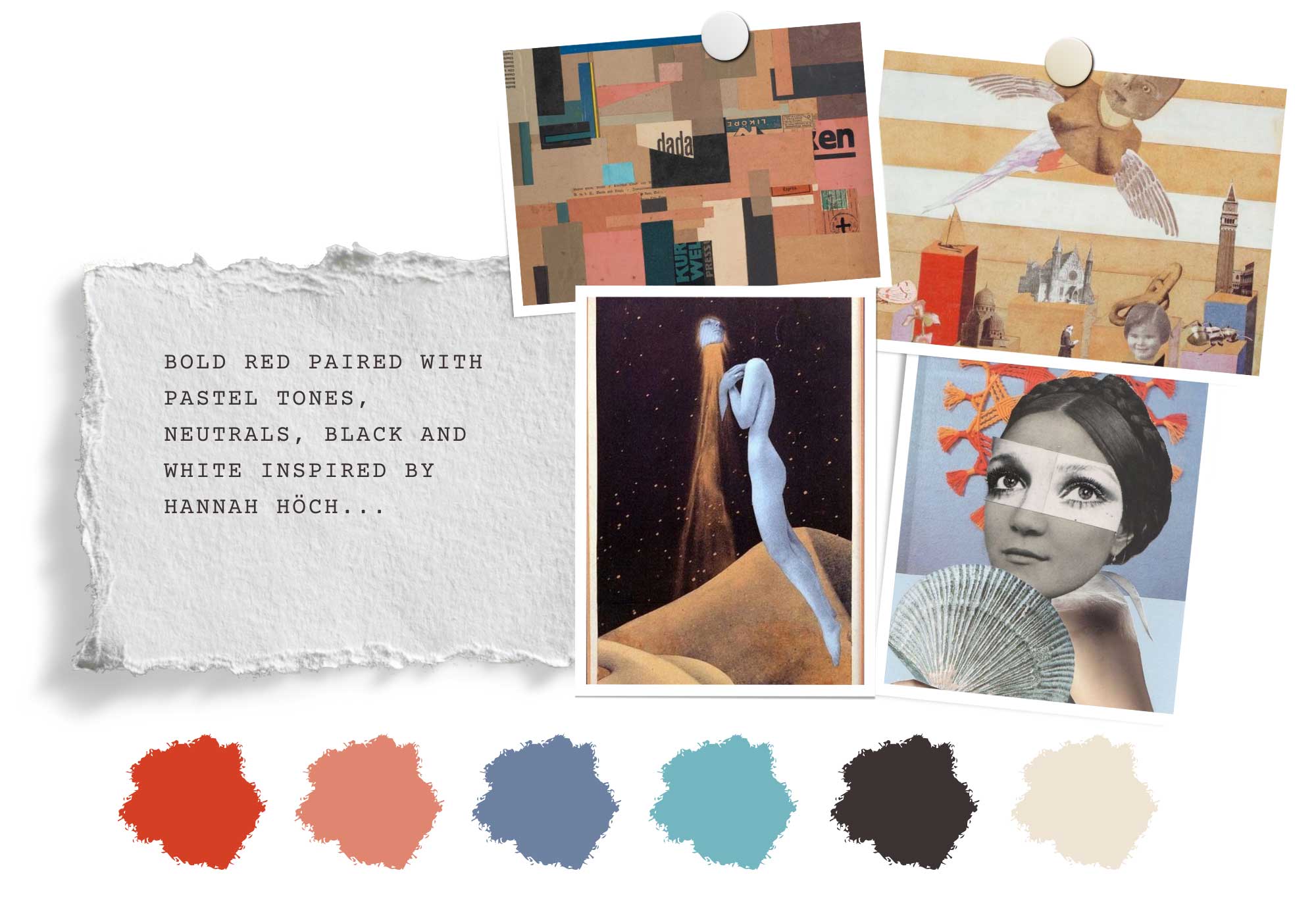
This month we are inspired by our master artist, Hannah Höch. Hannah Höch, a pioneering German artist associated with the Dada movement, was known for her innovative and influential collage artworks. Her use of colors in her collages was both striking and deliberate, contributing to the distinct visual language of her pieces. While her color choices varied throughout her career, some key characteristics can be observed:
Contrast: Höch often employed strong contrasts between colors to create visual impact and draw attention to specific elements within her collages. Bold color pairings, such as vibrant reds against deep blues or bright yellows against dark blacks, heightened the dynamism of her compositions.
Black and White: Höch frequently incorporated black and white elements in her collages, juxtaposing them with colorful fragments. This use of black and white added a sense of graphic boldness and emphasized the visual interplay between different elements.
Surreal and Dreamlike Tones: Some of Höch's collages featured muted and dreamlike color palettes, with soft pastels and subtle hues. This approach contributed to the surreal quality of her works and enhanced their enigmatic and dreamy atmosphere.
Diversity and Playfulness: Höch's collages were renowned for their diverse color schemes, reflecting her playful and experimental approach to composition. She fearlessly combined a wide array of colors and tones, embracing the unexpected and challenging traditional notions of color harmony.
Feminine Palette: In some of her more explicitly feminist works, Höch incorporated a feminine palette of pinks, lavenders, and soft blues, reflecting her exploration of gender identity and societal norms.
Chromatic Abstraction: As her style evolved, Höch explored chromatic abstraction, incorporating blocks of color and non-representational elements into her compositions. These abstractions added a sense of visual rhythm and balance to her collages.
Hannah Höch's innovative use of colors in her collage artworks was a testament to her creativity and artistic vision. Her bold juxtapositions, playful experiments, and distinct visual language contributed to her lasting influence on the development of collage as an art form.
Welcome to our monthly Master Artist Study. We embark on an enchanting exploration of the visionary artistry of Hannah Höch. As a trailblazer of the Dada movement and a pioneer of collage art, Höch's creative legacy remains an extraordinary tapestry of innovation and influence.
In this study, we will delve into the life and artistic journey of Hannah Höch, a German artist who defied convention and challenged the boundaries of artistic expression. Through her revolutionary collages, Höch dismantled traditional notions of gender, identity, and societal norms, constructing a visual language that was at once captivating and confrontational.
Together, lets explore her brilliance and enduring contributions to the world of art, as we journey through the vibrant, surreal, and thought-provoking realm of collage…
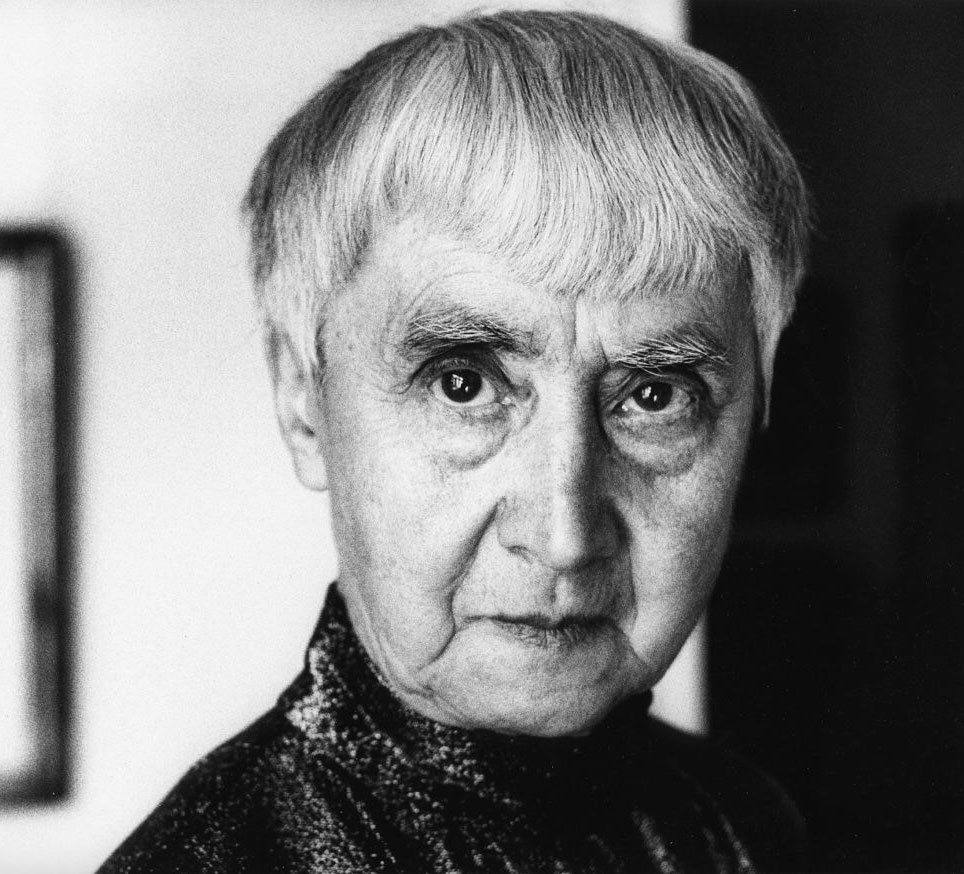
Hannah Höch was a pioneering German artist, born on November 1, 1889, in Gotha, Germany, and she passed away on May 31, 1978, in Berlin. She is best known for her groundbreaking contributions to the Dada movement and her innovative work in the medium of collage.
Höch's early artistic education began in Berlin, where she studied at the School of Applied Arts and the College of the Royal Museum of Applied Arts. During this time, she was exposed to various avant-garde art movements, including Expressionism and Cubism, which would later influence her artistic style.
Her career took a significant turn in the early 1910s when she met the influential Dada artist, Raoul Hausmann. The Dada movement was characterized by its rejection of traditional artistic conventions, embracing absurdity, and challenging societal norms. Höch became an active participant in the Berlin Dada circle, where she formed connections with other notable artists and writers, including Kurt Schwitters and Tristan Tzara.
Höch's exploration of the medium of collage became a central element of her artistic practice during this period. She developed a distinctive style of photomontage, creating compositions from images cut from popular magazines and newspapers. Her collages were often infused with a strong sense of political and social critique, addressing issues such as gender roles, consumer culture, and the representation of women in society.
In 1919, Höch and Hausmann collaborated on the creation of the "First International Dada Fair" in Berlin. This event marked a significant moment in the history of the Dada movement and showcased Höch's prominent role within the artistic avant-garde.
Throughout the 1920s and 1930s, Höch continued to produce innovative and thought-provoking collages, exploring themes related to identity, gender, and the changing social landscape of Germany. However, with the rise of the Nazi regime, her work was deemed "degenerate art," and she faced censorship and persecution. Despite these challenges, Höch continued to create art, albeit with less public visibility.
After World War II, Höch returned to public recognition, and her collages received renewed appreciation. She participated in various exhibitions and continued to produce art until her passing in 1978.
Hannah Höch's collage work has left an indelible mark on the history of art. Her radical and pioneering approach to photomontage has inspired generations of artists, especially women artists, to challenge conventions and explore new forms of creative expression. Today, Höch's art remains celebrated for its surreal beauty, social commentary, and profound impact on the world of collage and contemporary art.
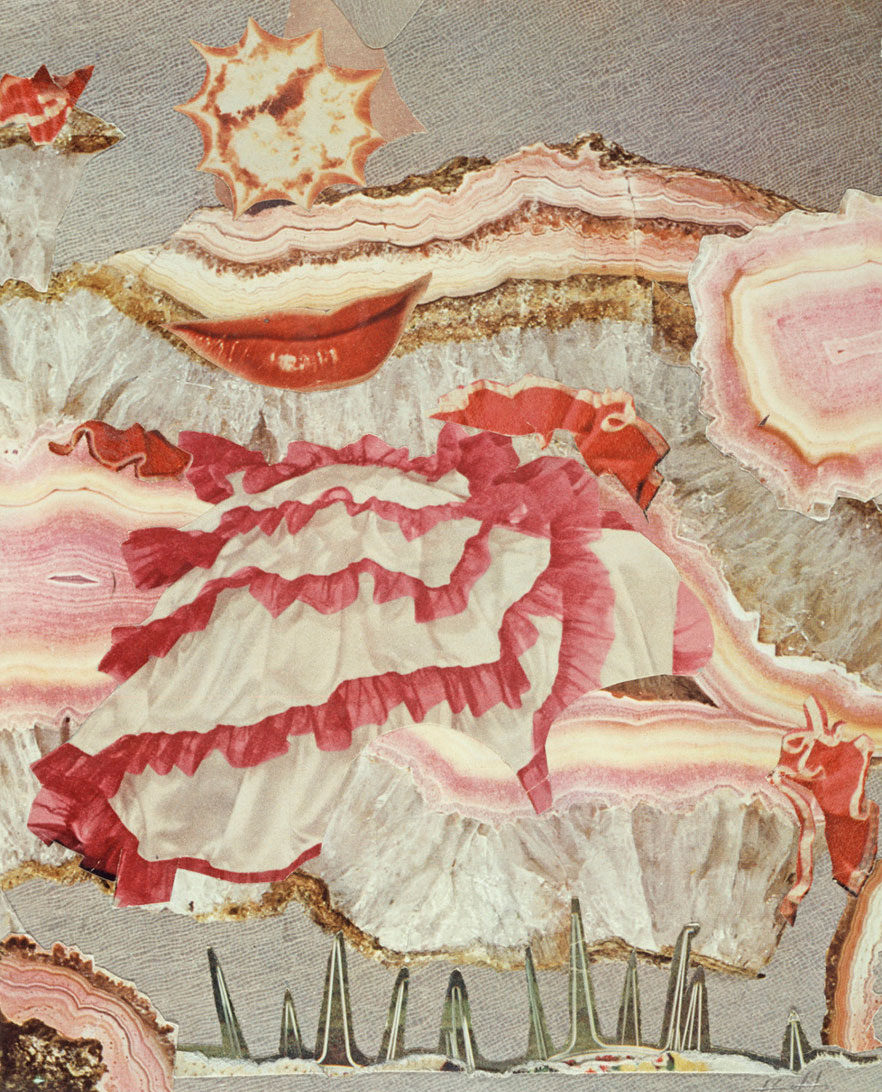
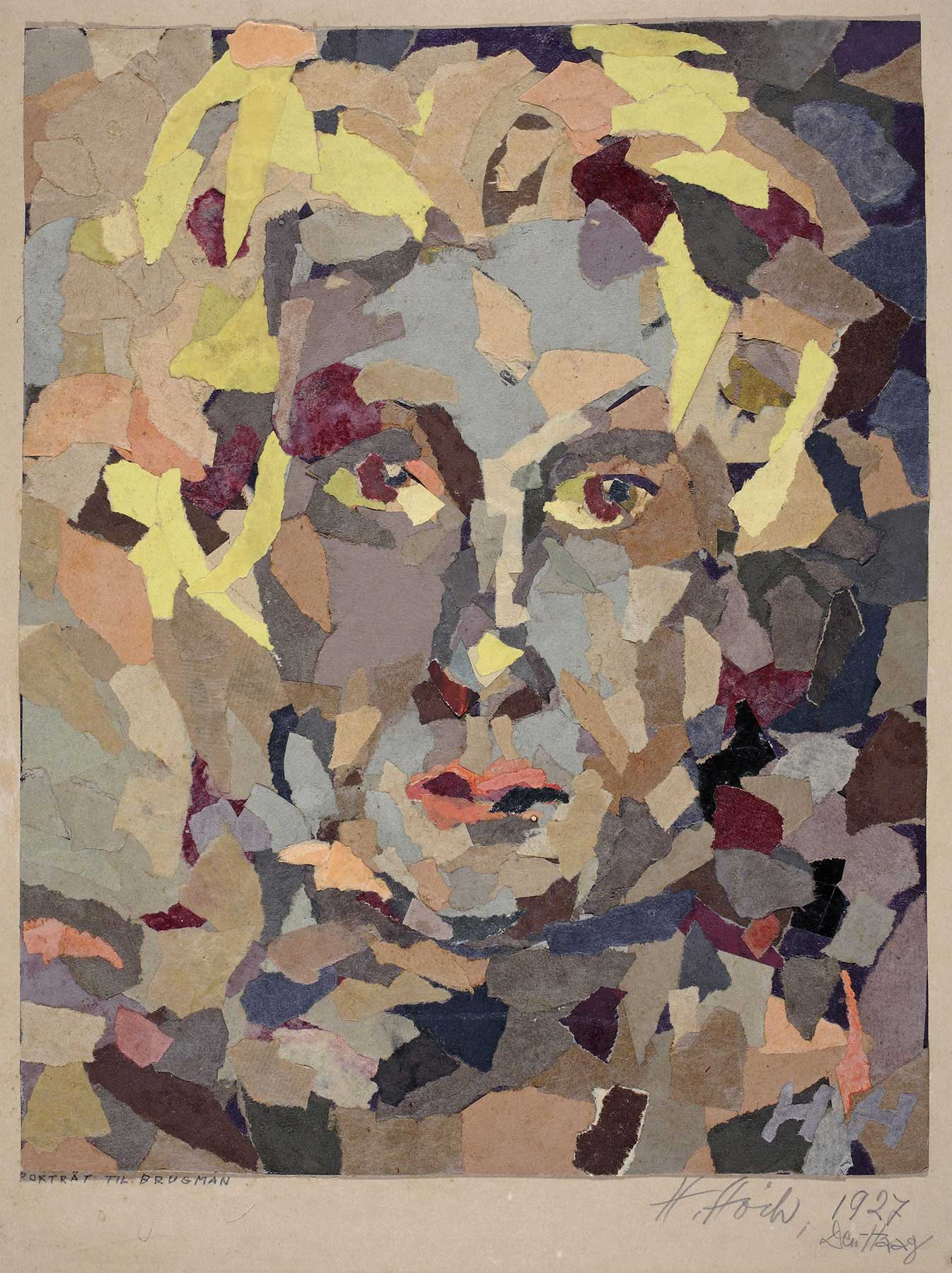
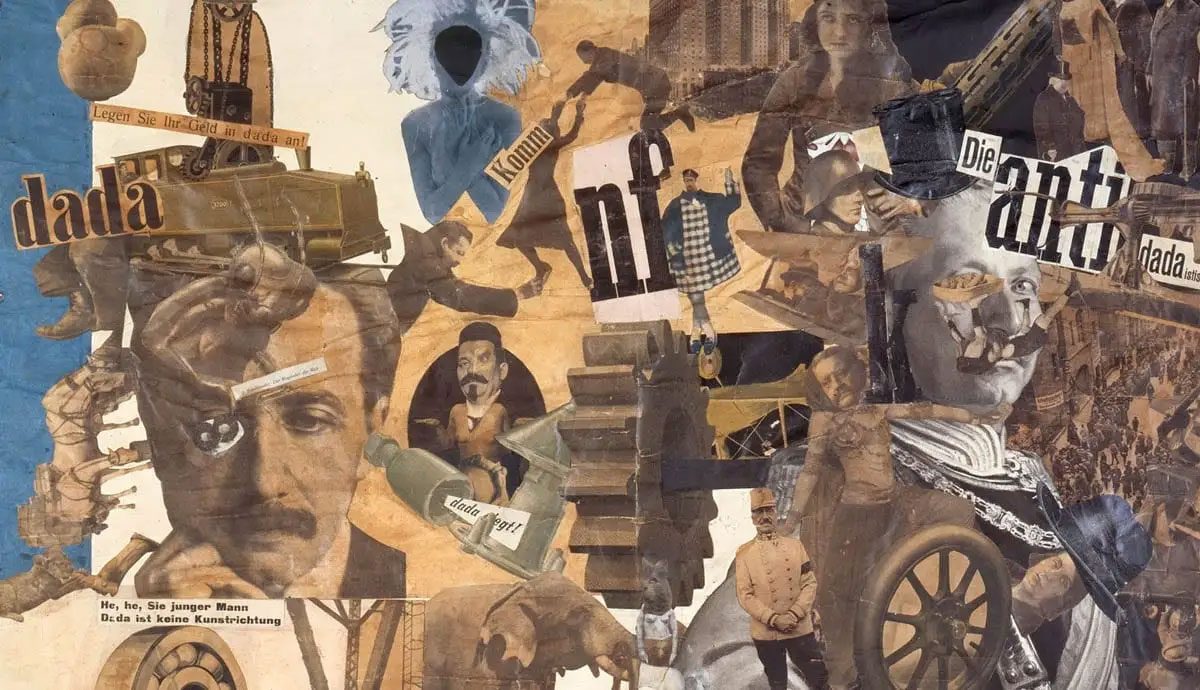
Here are some key design and compositional elements found in Hannah Höch's collages:
Juxtaposition and Fragmentation: Höch's collages often featured a juxtaposition of disparate elements, such as cutouts from magazines, photographs, and printed materials. She fragmented and reassembled these found images to create new contexts and meanings, challenging conventional representation.
Visual Layering: One of Höch's signature techniques was the layering of images, which added depth and complexity to her compositions. The overlapping of various elements allowed her to explore multiple themes and narratives within a single artwork.
Contrast and Texture: Höch played with contrast, incorporating elements with varying visual textures and tonalities. Bold black and white contrasts were frequently utilized to create graphic impact and draw attention to specific areas of the collage.
Dadaist Elements: As a prominent figure in the Dada movement, Höch infused her collages with Dadaist principles, embracing absurdity, irrationality, and anti-establishment ideas. Her artworks often contained nonsensical or enigmatic elements, challenging viewers to question conventional modes of understanding.
Social and Political Commentary: Höch's collages were not just aesthetic creations but also powerful forms of social and political critique. She used her art to comment on gender roles, consumer culture, and the shifting social landscape of Germany during her time.
Asymmetry and Dynamic Composition: Höch frequently employed asymmetrical compositions, eschewing traditional notions of balance. Her collages had a dynamic quality, with elements placed at varying angles and directions, adding energy and movement to the artwork.
Found Objects and Text: Höch occasionally included text and found objects in her collages, further blurring the boundaries between fine art and everyday life. These additions enriched the narrative and contextual aspects of her artworks.
Surreal and Dreamlike Imagery: Some of Höch's collages exhibited surreal and dreamlike qualities, with unexpected combinations of objects and dreamy atmospheres. These elements added an air of mystery and contemplation to her art.
Feminist Themes: As a pioneering female artist, Höch often explored feminist themes in her collages, challenging societal norms and redefining representations of women in art.
I love how it lets you kinda like just flow. I usually don’t go into my collage pieces with a plan just letting each element talk to me. - Liz Durant
Collage takes us to a greater picture - Pascaline Humphreys. For me, collage helps take away the fear of the blank page. It creates that spark, a jumping point that can take my art places I wasn’t expecting. It can add so much depth to the work, both visually and personally/spiritual. - Jessica Jidas
Even if I make a piece of art that I don’t like, I can always find a small portion of the piece that I love and wish I could re-create! So, I’ll cut that small piece out of the artwork, and save it. Collage is one way to use all of those scrumptious tidbits that I collect and love! - Gail Lynch Paljug
I love that collage encompasses all levels of mixed media. It can be a few tiny accents of vintage papers, or it can be the construction of an entire piece. It’s as organic as you want! I just did two different levels of paintings this weekend using it - Sarah Ayelet Lolidori
I love that I can merge different mediums with collage, working with watercolour textures first and then adding them to an acrylic background. A great way to make use of varying techniques. - Cherie Rößler Roessler
I have no idea or plan when I start, I just go with my instinct and the feel of all the different textures of the papers, the sound of the scissors snipping away as you cut out the different shapes, playing and putting down the papers to finally form something, the flow of the glue on the brush and the smell especially if it is the coccoina one ! Then the end result, your masterpiece that you had no idea you were going to make in the beginning. - Joan Fazio
Collage is a mix of everything you love in that particular moment blended together. It is like a recipe, a pinch of this and a dash of that and a sprinkle of fairy dust to create magic. - Darlene Forget
Challenge yourself to create a collage using only black and white materials or just one color in various values. Monochromatic collages can be striking and draw attention to shapes and textures. Remember that high contrast areas will create a focal point so consider this when arranging your collage.
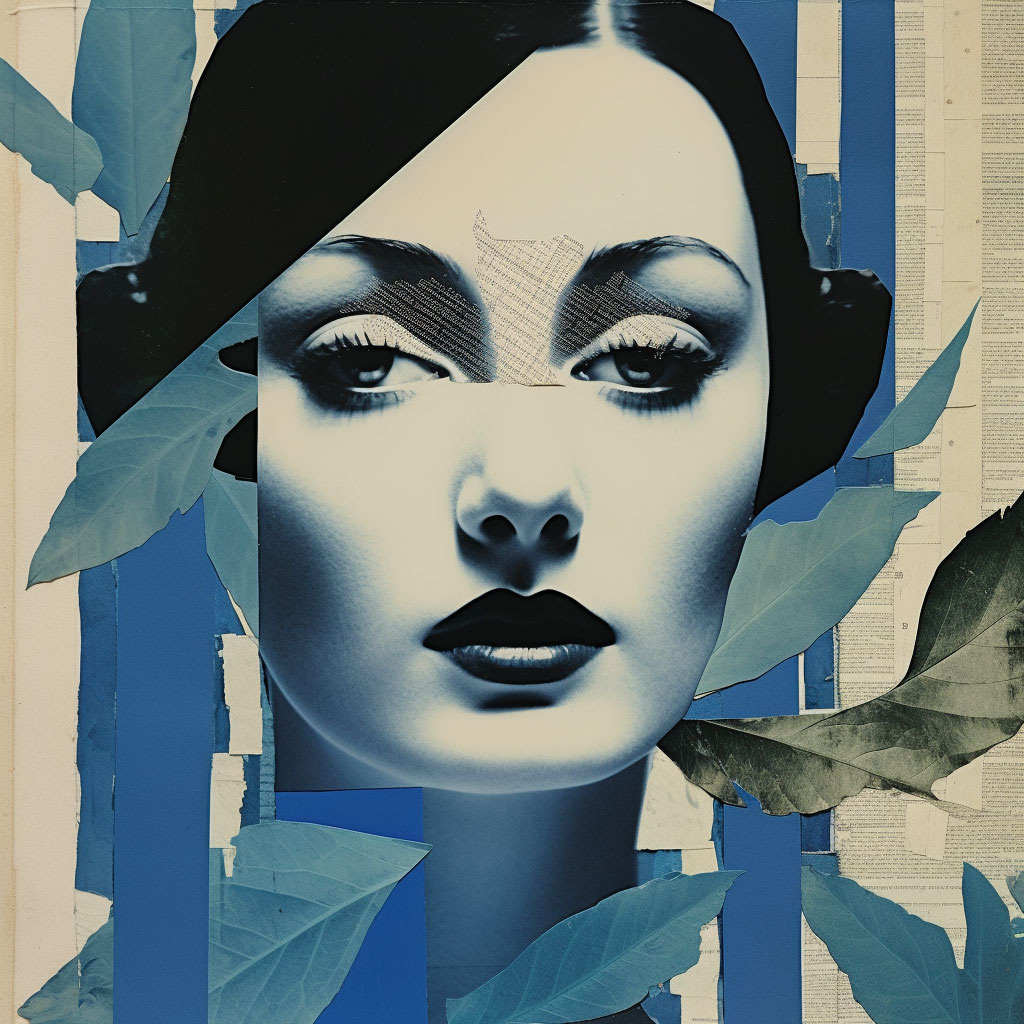
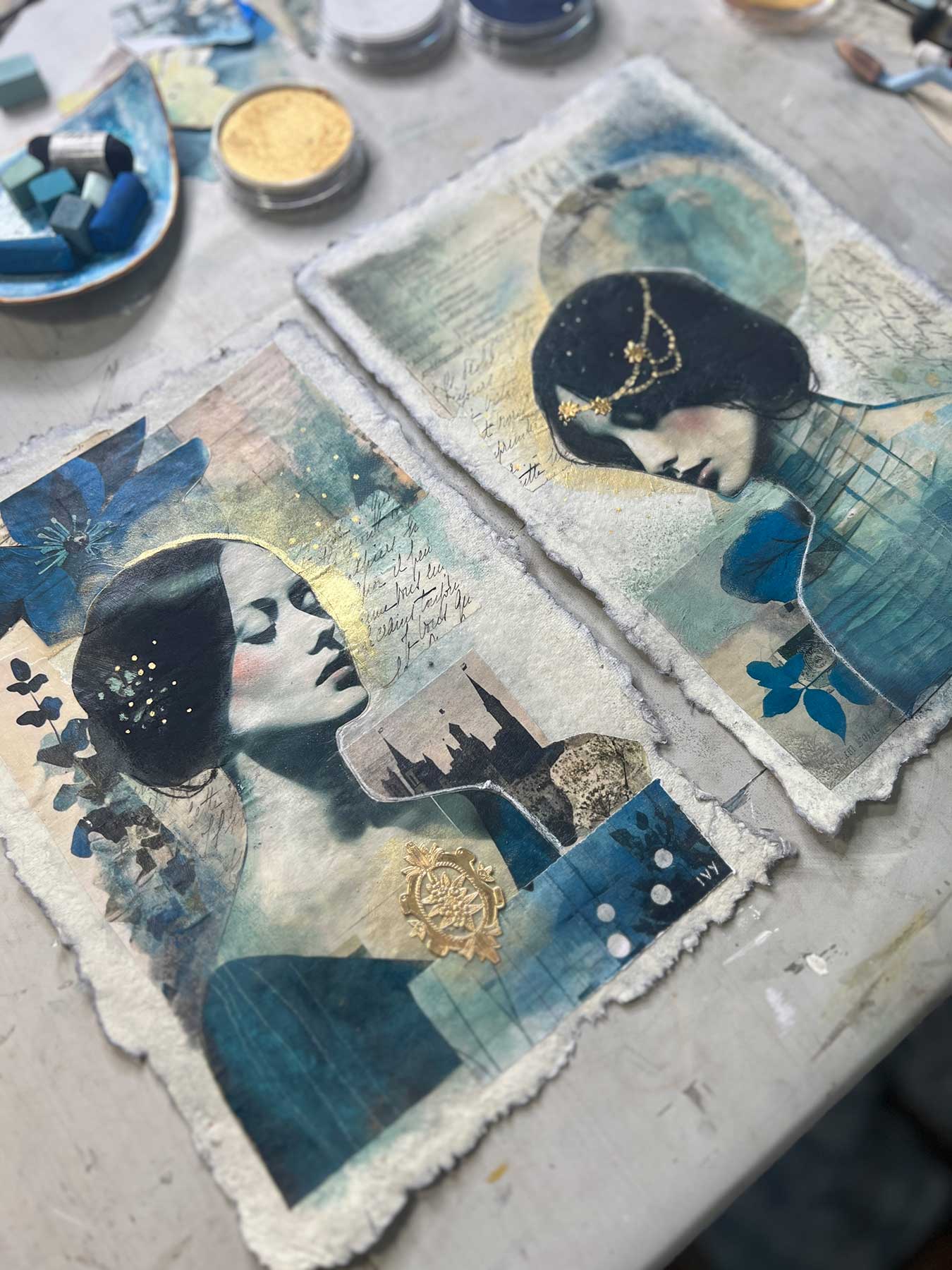
Focus on a particular color palette that inspires you. Collect images or materials predominantly in those colors and create a collage that explores the harmonies and contrasts within that palette. Why were you attracted to this color palette? Make a few notes to discover more about your color language.
Like our master artist, Hannah Höch, collect images from old magazines or newspapers that evoke specific emotions or tell a story. Create a narrative collage by arranging these images to convey a particular mood or storyline. Reflect of why you were drawn to these images and what story your inner artist wants to tell.
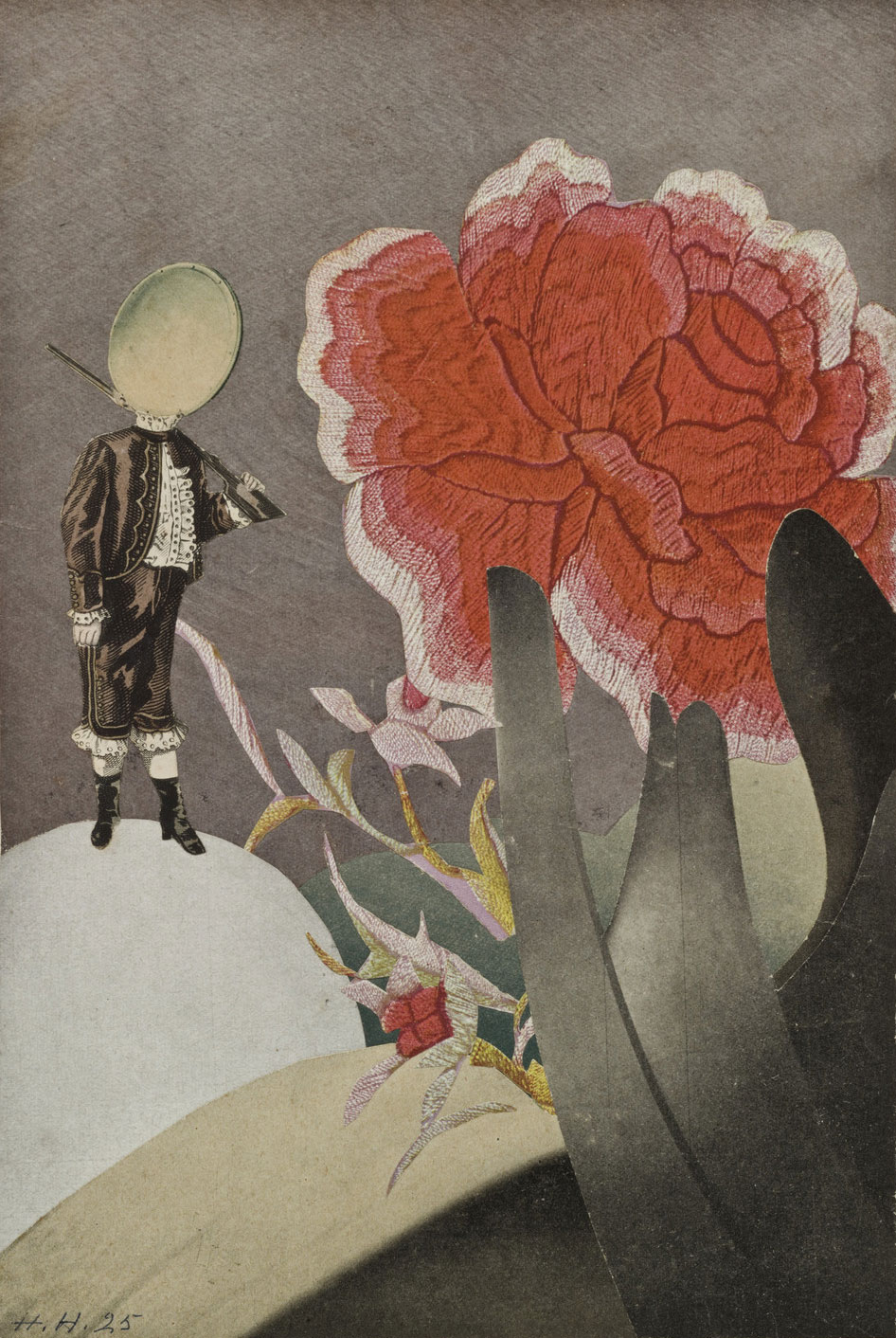
I'm excited to share this mixed media collage with you this month! It's a bit of a self-discovery journey but please feel free to use other images if you don't resonate with doing a self-portrait. The principles and techniques I discuss apply to any method of collage making!
So, grab your favorite old magazines, vintage papers, napkins or other ephemera that you enjoy, your scissors and glue and let's have some fun with this collage project! Allow yourself to really play and explore combining different elements! That's the beauty of collage!
Have fun!

One of my favorite things to do is to curate inspiration. From Pinterest boards to books, resources, playlists and more - I love to share anything that might facilitate learning, expansion, and sparks of curiosity! Being an artist, we naturally crave these things so here are some of this month’s picks from me to you.
I had so much fun curating this list. I hope you enjoy!!
Here are just a few of our fantastic classes! I highly recommend checking them out if you haven’t already. Enjoy!